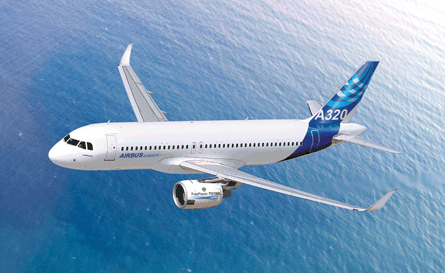Airbus has given its strongest indication yet that a re-engined A320 could be a reality within five years, but has essentially ruled out adopting Pratt & Whitney's PW1000G geared turbofan unless it is offered through the International Aero Engines consortium.
"The more you convince yourself it is 2024 for the next-generation single-aisle, the more you realise you must do something with the existing aircraft," says Airbus's chief salesman John Leahy.
Leahy told Flightglobal at the Dubai air show that Airbus's preferred solution is for any new powerplant to come through the existing A320 family suppliers CFM International and IAE, saying: "It could be CFM's Leap X," which he describes as essentially a successor to the A320's current CFM56, or an IAE (rather than P&W) offering. "It would be extremely doubtful that anything we do wasn't through IAE," Leahy added in Dubai.

Image copyright: Flightglobal
P&W, which along with Rolls-Royce is a 32.5% shareholder in IAE, confirms that it has held talks with Airbus along with all the other airframers about PW1000G applications. But it adds that its "preference" for Airbus and Boeing's re-engined single-aisle engine requirements "has always been to have IAE as the channel to market. If an IAE approach were not possible, P&W would discuss with the aircraft manufacturers and our technology partners the possibility of the PW1000G engine as a P&W offering."
Leahy believes that an exclusive A320 re-engining deal with "a third engine supplier" would be "absurd", pointing out that this is what Airbus did with P&W when it launched the A318 with the PW6000: "That was exclusive and they couldn't deliver the engine."
P&W declines to comment on whether it has sought such a deal for a GTF-powered A320 development, but IAE confirms that it is in discussion with Airbus about a possible A320 re-engining, covering both enhanced V2500 versions and "any future possibilities".
Airbus is "looking at middle of the next decade" for the likely service entry for any upgraded version, says Leahy, as it is vital engine makers are given a big in-service window - seven to eight years - to ensure any re-engined aircraft is not quickly made obsolete by all-new successors.
Source: Flight International























